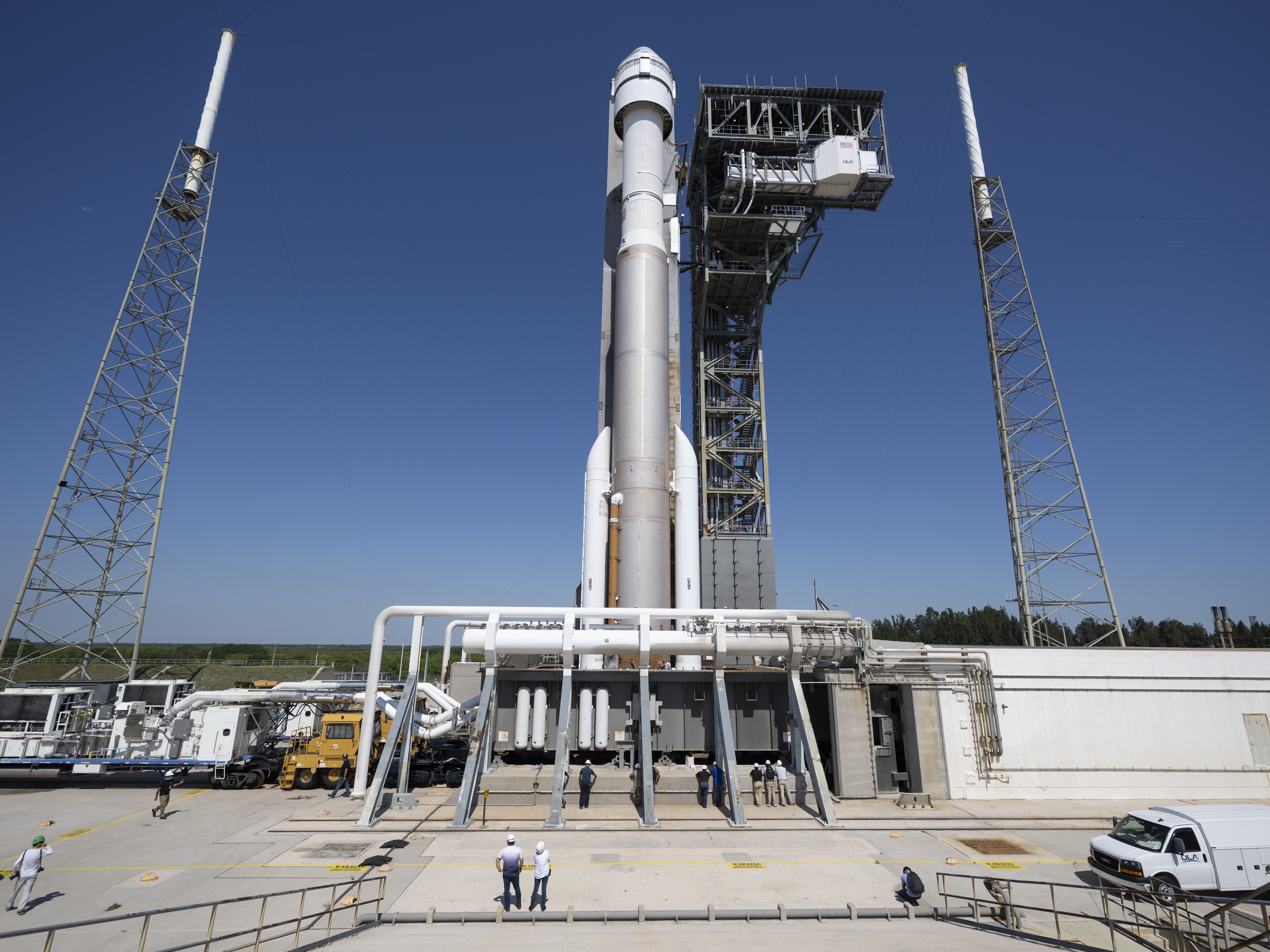
A United Launch Alliance Atlas V rocket with Boeing's Starliner spacecraft aboard is rolled to the launch pad ahead of the NASA's Boeing Crew Flight Test set for Saturday, June 1.
NASA/Getty Images / NASA/Getty Images
The summer space-travel season is already off to a rough start.
After years of delays, NASA is preparing to launch two astronauts to the International Space Station aboard a new spacecraft built by Boeing.
Astronauts Suni Williams and Butch Wilmore are set to lift off at 12:25 PM ET Saturday aboard the Boeing Starliner en route to the International Space Station. The lift off will come roughly a month after the Starliner was originally supposed to fly to the station, and that launch was already years behind schedule.
But in a twist familiar to many air travelers here on Earth, the astronauts' luggage is getting left behind. The lost luggage isn’t Boeing’s fault. The space station’s urine recycling system broke earlier this week and NASA had to make room to send up a new pump.
“We ended up pulling off two crew suitcases, those have clothes on them,” said Dana Weigel, the manager of NASA’s International Space Station Program during a press briefing on Friday.
Here’s what else you need to know about today’s launch.
Related: Boeing’s troubled Starliner spacecraft launch is delayed again
This will be the first flight of the Starliner
In 2014, NASA awarded Boeing a $4.2-billion-dollar contract to build Starliner as a vehicle to carry astronauts on routine missions to the International Space Station.
The Starliner program has since fallen far behind schedule and gone over budget. Boeing has estimated the program has cost the company over $1 billion in losses.
At the same time NASA awarded the Boeing contract, it gave SpaceX $2.6 billion to develop its Dragon capsule. That spacecraft conducted its crewed test flight in 2020, and now regularly carries astronauts to the station.
Starliner has been beset by technical problems
The Starliner failed to reach the I.S.S. during its first mission in 2019. The cause was an incorrectly set onboard clock, which caused a computer to fire the capsule's engines too early. The spacecraft managed to reach the I.S.S. during its second test flight in 2022, despite the failure of some thrusters to work as planned.
Boeing delayed Starliner's first crewed flight last year, after company officials realized that adhesive tape used on hundreds of yards of wiring was potentially flammable, and the capsule’s three parachutes were connected with lines that appeared to be weaker than expected.
Its most recent launch attempt on May 6 was called off due to a stuck valve on the rocket launching Starliner. That valve was replaced, but engineers also discovered a small helium leak in one of Starliner's thrusters.
The leak is probably due to a faulty seal, though the engineers aren’t totally sure. Still, after weeks of extensive analysis they believe that Starliner can fly safely even with the leak.
Related: Launch for Boeing Starliner’s first crewed ride into space has been scrubbed
Today’s launch will nevertheless be a major milestone
Despite all the problems, today’s launch is still likely to be a major milestone for both NASA and Boeing.
A successful test will pave the way for more Starliner flights, which will give NASA two independent private spacecraft that can carry astronauts to the space station.
Assuming all goes smoothly, Starliner will dock with the space station and remain there for a little over a week, while Williams and Wilmore conduct numerous tests. It will then re-enter Earth’s atmosphere and land at one of several sites in the Western United States.
NPR’s Joe Hernandez contributed to this report.
Copyright 2024 NPR

